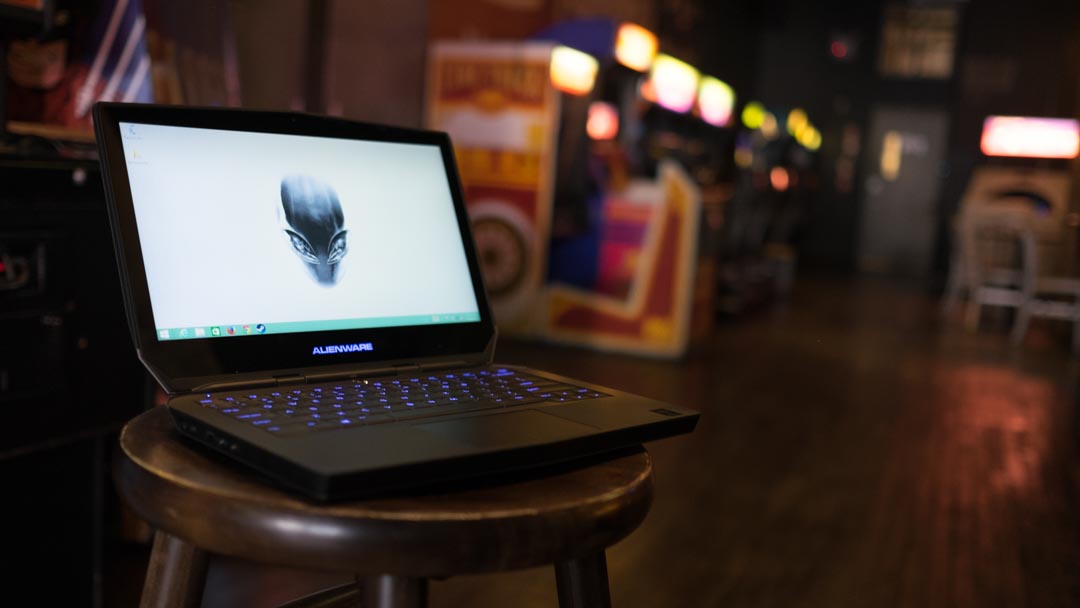Why you can trust TechRadar
The Alienware 13 has a shockingly small footprint for a gaming laptop. Even so, weighing in at 4.5 pounds (2.06kg), it's just a tad bit heavier than some of the competition in its size range. The 14-inch Aorus X3 Plus v3 is somehow lighter at 4.12 pounds (1.87kg), while still packing in more hardware than the Alienware 13. The MSI GS30 Shadow weighs light as a feather by comparison at just 2.65 pounds (1.20kg). Despite being on the heavy end for a laptop of its size, its heft is offset visually by its sleek, slightly rounded-off edges.
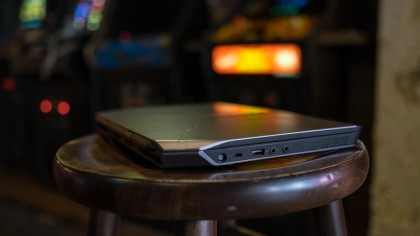
Measuring in at 12.9 x 9.3 x 1.09 inches (328 x 235 x 28mm), this Alienware laptop might be heavier than the X3 Plus and the GS30 Shadow, but it mirrors their slim dimensions much more closely. And, just like the other options, the Alienware 13 nixed the optical drive, making it small enough to fit snugly into most laptop bags and backpacks.
So, what was Alienware able to squeeze into the chassis? Here's the configured Alienware 13 unit sent to TechRadar for review:
Spec sheet
- Processor: 2.4GHz Intel Core i7-5500U (dual-core, 4MB cache, up to 3.0GHz with Turbo Boost)
- Graphics: Nvidia GeForce GTX 960M (2GB GDDR5 RAM)
- Memory: 8GB DDR3L (1,600MHz)
- Screen: 13-inch, 2,560 x 1,440 QHD, anti-glare
- Storage: 256GB SSD
- Connectivity: Killer 1525 802.11ac, Bluetooth 4.1
- Operating system: Microsoft Windows 8.1 (64‐bit)
- Ports: Ethernet, USB 3.0 x 3, Mini DisplayPort, HDMI, headphone and microphone inputs
- Weight: 4.53 pounds
- Dimensions: 12.9 x 9.3 x 1.09 inches (W x D x H)
- Warranty: 1-year Alienware Limited Hardware; 10-14 day mail-in repair after remote diagnosis
What we're looking at here is a slightly modified variation of Alienware's $1,399 (about £1261, AU$1833) configuration, which is nearly the highest tier available. The Alienware 13 goes for as low as $949 (£948, AU$1,599) but can cost up to $1,649 (£1,198, AU$2,999) at the highest end. The configurations vary a bit between regions, but whichever bracket best represents your budget, you can rest easy knowing that its most alluring component, the Nvidia GeForce GTX 960M, comes standard.
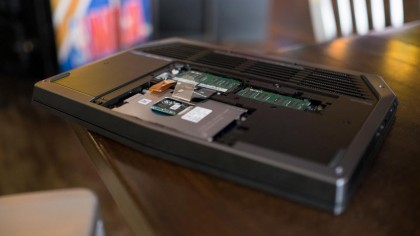
Electing for the highest tier over the lowest nets you the typical gains, like a switch from a spinning hard drive to a 256GB solid-state drive , a jump from Core i5 to i7 and doubling the RAM from 8GB to 16GB. But even the most juiced Alienware 13 has trouble stacking up to other gaming laptops in its size class.
This machine is limited throughout its four customizable tiers to dual-core processors and the GTX 960M with 2GB of video RAM, which just isn't much for a gaming laptop in 2015. The Aorus X3 Plus v3 runs circles around it with its quad-core i7-4710HQ and the 970M, which packs a whopping 6GB of video RAM. Of course, this is portable gaming we're talking about, so that'll cost you $2,199 (around £1,346, or AU$2,742).
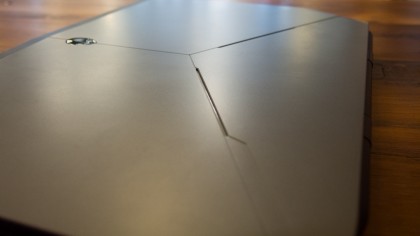
When looking at another option, the MSI GS30 Shadow, Alienware's 13-inch laptop continues to be outpaced, but not by nearly as much. This MSI shares a common trait with the Alienware 13 in that it can also link up to an external graphical booster to enhance its output. But speaking just on the basis of what each laptop can offer out of the box, the MSI GS30 Shadow features a killer, quad-core i7-4870HQ processor and double the amount of RAM for around $1,500 (about £1355, AU$1,958) at the time of writing. But where the Alienware 13 wins in this matchup is with its dedicated graphics, one-upping the GS30 Shadow's integrated solution, which is powered by Intel Iris Pro Graphics 5200.
At the $1,399 price range, the Alienware 13 has the advantage against the competition as being an affordable entry point to QHD gaming. The only problem that arises is when you attempt to game on this machine's native resolution. It's just not going to work well, but I'll dive more into that later.
Graphics...Amplified!
The Graphics Amplifier is super cool. The concept of being able to plug into an external device to juice up your graphical experience as tech advances years down the line is a devilishly clever idea. But for $199 (£207, AU$349) for the enclosure alone at the time of writing, it's not a cheap addition.
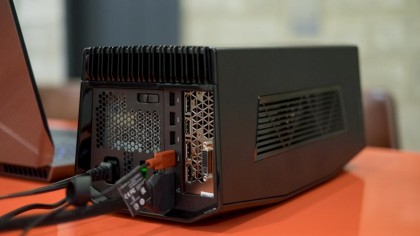
Again, that doesn't even include the price of a graphics card that you'll need to stock it with. We're talking an extra $800 or so if you're really going for the throat with an Nvidia GeForce GTX 980 or something comparable in the AMD realm of graphics cards.
Here is the Alienware Graphics Amplifier configuration given to TechRadar for review:
- GPU capacity: PCIe x16 Slot for desktop graphics card
- Graphics: PNY XLR8 GeForce GTX 980 (4GB GDDR5 RAM)
- Power supply: Alienware-approved, 460 Watt multi-GPU
- Ports: 4 x USB 3.0, Alienware Graphics Amplifier to Notebook Port
- Weight: 7.71 pounds (3.5kg)
- Dimensions: 7.3 x 16.12 x 6.83 inches (185 x 409 x 173mm, W x D x H)
How does the competition stack up now? The Aorus X3 Plus v3 doesn't utilize a graphics amplifier. That's because, frankly, with 6GB of vRAM, it doesn't need one.
Looking at the GS30 Shadow, its screen powers down when plugged into the 16-pin PCI Express connector of its Gaming Dock. Also, when mounted on top of the printer-sized box, it's also relatively out of reach at this point. So, you'd better have an external monitor, keyboard and mouse.
The Alienware 13, on the other hand, can resume its laptop utilities, just with the proprietary 4-pin PCI-E 3.0 cable coming from the Gaming Amplifier plugged discretely into its back.
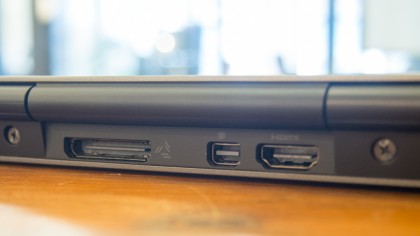
It's hard to say which method is better for gamers, as each has its share of perks and flaws. MSI's solution employs a standard 16-pin PCI-E connector, so it essentially incorporates the GS30 Shadow's components as if they were all on a motherboard together. However, the laptop is totally out of reach when mounted on the Gaming Dock.
Alternatively, Alienware opted for a cleaner-looking, more versatile method, but it's doubtful that the 4-pin PCI-E cable used with the Graphics Amplifier provides the uncompromised bandwidth required to fully siphon the power of the GTX 980 into the experience.
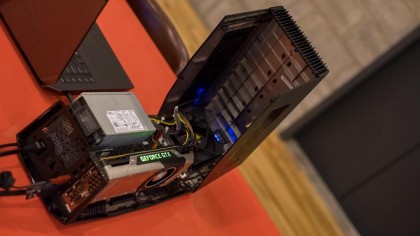
If the idea of the Alienware's Graphics Amplifier appeals to you, it's hard to blame you. But keep in mind that the overall performance of the Alienware 13 will only be as strong as its weakest link. I'm afraid that its dual-core, mobile Intel processor is a bitter bottleneck that might make you regret spending all of that money.
That said, the Graphics Amplifier is a handy solution for desktop-ifying the Alienware 13 with, you know, desktop-grade performance that most mobile chips have a hard time matching.
Current page: Specifications and value
Prev Page Introduction and design Next Page Performance and featuresCameron is a writer at The Verge, focused on reviews, deals coverage, and news. He wrote for magazines and websites such as The Verge, TechRadar, Practical Photoshop, Polygon, Eater and Al Bawaba.
